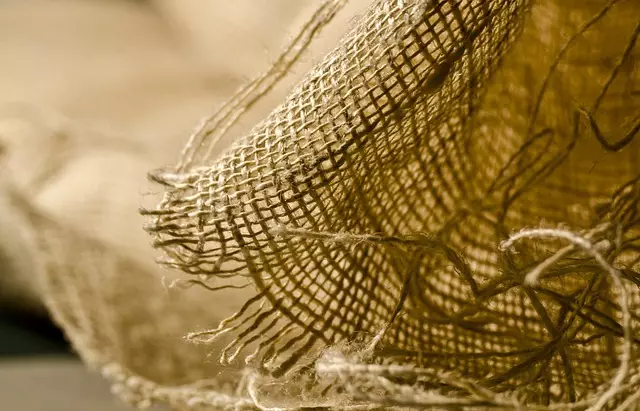Muscle soreness, commonly known as delayed-onset muscle soreness (DOMS), is a common experience after new or strenuous physical activities. It results from the body's repair mechanisms following muscle injury, involving cellular interactions with satellite cells, immune cells, and healing proteins. To manage this, workout regimens should balance exercise stimulation with recovery rest, and diversify exercises to prevent injury. Complementary therapies like foam rolling and stretching can enhance circulation and potentially alleviate soreness. For those exploring alternatives to pain management, it's important to be aware of the legal status of substances like kratom; in Tennessee, where its use is subject to regulations under the 'Is Kratom Illegal In Tennessee?' guidelines, it's currently illegal. It's crucial to consult healthcare professionals and monitor local laws before using such products. A holistic approach that includes gradual workout progression, proper warm-ups, hydration, and active recovery can help minimize DOMS and contribute to a robust fitness routine.
Muscle soreness, a common experience for individuals engaging in physical activity, can range from a mild annoyance to a debilitating condition. This article delves into strategies for alleviating muscle soreness through tailored workout plans. Understanding the origins of muscle soreness is key to addressing it effectively. We explore the science behind exercise-induced muscle damage and the body’s natural repair process, offering insights into how customized workout regimens can be designed to minimize discomfort. Additionally, we examine the legality and potential role of kratom in Tennessee as an alternative pain relief option, addressing concerns about its status under state laws. With a focus on active recovery, stretching techniques, and exercise adjustments, learn how to craft a workout plan that not only prevents but also relieves post-exercise soreness, ensuring your fitness journey remains smooth and uninterrupted.
- Understanding Muscle Soreness and Its Causes
- The Role of Customized Workout Plans in Alleviating Muscle Soreness
- Kratom Legality in Tennessee: Is It an Option for Pain Relief?
- Designing a Workout Plan to Combat Post-Exercise Soreness
- Integrating Active Recovery and Stretching Techniques
- The Science Behind Muscle Repair and Regeneration Through Exercise Adjustments
Understanding Muscle Soreness and Its Causes

Muscle soreness, often referred to as delayed-onset muscle soreness (DOMS), is a common experience among individuals engaging in new or strenuous physical activities. This phenomenon occurs when muscles are subjected to unaccustomed levels of stress or strain, which can lead to microscopic tears in the muscle fibers. The body then initiates a repair process, which can result in inflammation and the sensation of soreness. Understanding the root causes of muscle soreness is essential for developing targeted workout plans aimed at alleviating discomfort. Factors such as intensity, volume, and the frequency of exercise sessions significantly influence the degree of muscle soreness experienced. For instance, a sudden increase in the weight lifted or an unfamiliar type of movement can precipitate this response.
In the realm of natural remedies and supplements, kratom has garnered attention for its potential impact on pain relief, including muscle soreness. Kratom, derived from the leaves of Mitragyna speciosa, a tree native to Southeast Asia, contains compounds that may interact with opioid receptors in the brain, offering analgesic effects. However, it’s important to approach the use of kratom with caution due to its legal status; for example, as of my knowledge cutoff in 2023, kratom is classified as a Schedule I controlled substance in Tennessee, making it illegal to possess, distribute, or sell within the state. Therefore, while some individuals may find relief through kratom, adhering to legal and safe alternatives, such as stretching, foam rolling, and light-intensity exercise, is advisable for managing muscle soreness. These alternative methods not only respect legal boundaries but also promote overall wellness and recovery.
The Role of Customized Workout Plans in Alleviating Muscle Soreness

Customized workout plans play a pivotal role in effectively managing muscle soreness, particularly when incorporating exercises that promote flexibility and recovery. These tailored regimens consider an individual’s unique physiology, fitness level, and personal goals, ensuring that workouts are optimized for the body’s response to exertion. For instance, integrating dynamic stretching and low-impact activities can help in mitigating muscle soreness caused by intense training sessions. Moreover, these plans often include periods of rest and active recovery, which allow muscles to repair and strengthen.
In the context of seeking natural remedies for muscle soreness relief, some individuals explore alternatives such as kratom. It’s important to note that the legal status of kratom varies by state; for example, kratom is considered a Schedule I controlled substance in Tennessee, implying its use must comply with state regulations. Therefore, while customized workout plans are a safe and regulated approach to alleviating muscle soreness, it’s crucial to adhere to legal guidelines when considering supplementary measures like kratom. Users should always consult with healthcare professionals before integrating new substances into their recovery strategy to ensure safety and efficacy.
Kratom Legality in Tennessee: Is It an Option for Pain Relief?

Kratom, a plant from Southeast Asia, has gained attention for its potential to provide pain relief. As individuals seek alternatives to traditional pharmaceuticals for muscle soreness relief, kratom’s status as a legal substance in Tennessee is a significant factor to consider. The legality of kratom in Tennessee has been subject to legislative debate and change over recent years. As of the current knowledge cutoff, kratom is not explicitly classified as a controlled substance under Tennessee state law. However, it falls under the auspices of the Tennessee Alcoholic Beverage Commission’s (TABC) jurisdiction, which oversees substances with intoxicating or psychoactive properties. This means that while kratom is legally available in Tennessee, its sale and possession are governed by specific regulations set forth by the TABC. It’s important for consumers to stay informed on any updates regarding state laws, as the legal status of kratom can change, potentially affecting its availability. Users considering kratom for muscle soreness relief should be aware that while it may offer pain relief, its use should be approached with caution and in accordance with local laws. Always consult with a healthcare provider before incorporating any new substance into your health regimen to ensure it aligns with your personal health needs and does not interfere with any existing conditions or treatments.
Designing a Workout Plan to Combat Post-Exercise Soreness

Designing a workout plan that effectively combats post-exercise soreness, commonly known as delayed onset muscle soreness (DOMS), requires a strategic approach that balances intensity with recovery. Incorporating a variety of exercises targeting different muscle groups can help distribute the stress across your body, reducing the intensity of soreness in any single area. This approach involves alternating between upper and lower body workouts, ensuring each group receives adequate attention without overworking it. Additionally, incorporating flexibility and mobility routines, such as stretching or yoga, into your regimen can aid in recovery by enhancing muscle elasticity and joint range of motion.
When considering natural remedies that may complement a workout plan for muscle soreness relief, some individuals explore the use of kratom, particularly its derivatives like Mitragyna Hirsuta, which is often associated with pain management. It’s important to approach such supplements with caution, as the legal status of kratom varies by state; for instance, kratom is deemed an illegal substance in Tennessee, as per the Is Kratom Illegal In Tennessee? guidelines. Users must comply with local regulations and consult healthcare professionals before incorporating any new substances into their wellness routines to ensure safety and legality. A well-rounded workout plan should focus on gradual progression, proper warm-up and cool-down practices, adequate hydration, and sufficient rest to allow muscles to repair and grow stronger. This holistic approach can help in mitigating the effects of DOMS and promote a more resilient fitness regimen.
Integrating Active Recovery and Stretching Techniques

When addressing muscle soreness, integrating active recovery and stretching techniques can play a pivotal role in accelerating recovery and enhancing overall well-being. Active recovery involves gentle, low-intensity exercises that promote blood flow to the affected muscles without exacerbating the soreness. This approach can include activities like walking, swimming, or cycling. It encourages the removal of metabolic waste products from the muscle tissues and introduces fresh nutrients and oxygen, aiding in the healing process. For individuals who may be cautious about engaging in physical activity due to discomfort, it’s crucial to start with light intensity and gradually increase as pain decreases.
In tandem with active recovery, stretching techniques are also beneficial for muscle soreness relief. Stretching can improve flexibility, alleviate tension, and reduce the tightness often associated with post-workout recovery. Dynamic stretches, which involve controlled movements through a range of motion, can enhance circulation and prepare the muscles for subsequent activities. On the other hand, static stretches, where a muscle is stretched to the point of mild discomfort and held for a period, can help target specific areas of tightness or soreness. It’s important to approach stretching with mindfulness, as overstretching can lead to injury. Both active recovery and stretching should be tailored to the individual’s needs and current fitness level, ensuring a balanced and effective approach to managing muscle soreness.
The Science Behind Muscle Repair and Regeneration Through Exercise Adjustments

Muscle soreness, often referred to as delayed-onset muscle soreness (DOMS), is a common experience among those who engage in unfamiliar or intense exercise. The science behind muscle repair and regeneration involves complex biological processes that require a nuanced approach when designing workout plans, especially for individuals experiencing soreness. Exercise adjustments should be tailored to the individual’s condition, as continued stress on already fatigued muscles can impede recovery.
The body’s response to muscle injury or strain initiates a cascade of repair mechanisms, which include inflammation, tissue remodeling, and the growth of new fibers. This process is facilitated by various cellular interactions involving satellite cells, immune cells, and proteins responsible for tissue repair. When creating customized workout plans for muscle soreness relief, it’s crucial to balance the stimulation of muscle growth with adequate recovery time. Incorporating exercises that target different muscle groups can prevent overuse injury and allow for a more systematic approach to muscle recovery. Additionally, incorporating modalities such as foam rolling, gentle stretching, or hydrotherapy can enhance circulation and promote healing while minimizing further soreness. Understanding the intricate balance between exercise stimulus and muscle repair is key to designing effective workout plans that cater to individuals experiencing muscle soreness.
Muscle soreness can be a significant hurdle for many individuals aiming to maintain an active lifestyle. Understanding its origins and implementing tailored workout strategies are crucial steps toward alleviating this discomfort. This article has explored the multifaceted approach to managing post-exercise soreness, including the integration of active recovery, stretching, and exercise adjustments that facilitate muscle repair and regeneration. Moreover, it’s important to be aware of alternative pain relief options, such as kratom, and their legal status in Tennessee, where questions about “is kratom illegal in Tennessee?” are frequently asked. By considering individual needs and the science behind effective recovery techniques, a customized workout plan can effectively mitigate muscle soreness, allowing for consistent and safe progress toward fitness goals.






